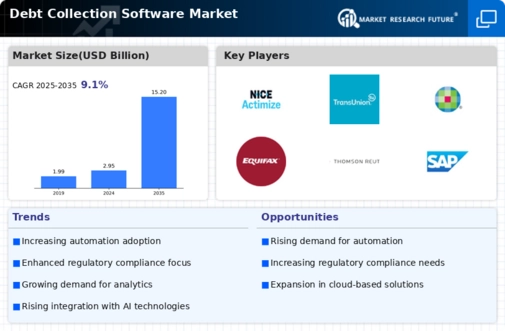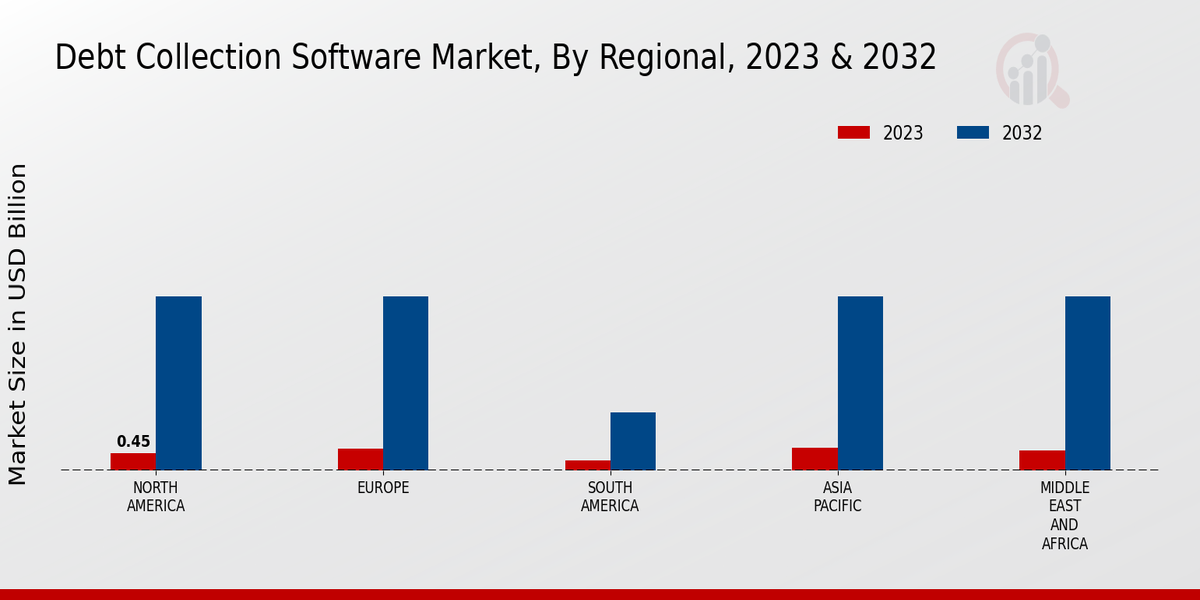Market Growth Projections
The Global Debt Collection Software Market Industry is projected to experience substantial growth over the next decade. With a market value of 2.95 USD Billion in 2024, it is anticipated to reach 15.2 USD Billion by 2035. This represents a remarkable CAGR of 16.1% from 2025 to 2035. The increasing adoption of technology-driven solutions, coupled with the rising need for efficient debt recovery processes, underpins this growth trajectory. As organizations seek to enhance their operational efficiency and compliance, the demand for innovative debt collection software is likely to continue its upward trend.
Rising Consumer Debt Levels
The Global Debt Collection Software Market Industry is propelled by the rising levels of consumer debt across various regions. As individuals and businesses accumulate debt, the need for effective debt recovery solutions becomes paramount. The increasing reliance on credit and loans has led to a surge in delinquent accounts, prompting organizations to adopt advanced debt collection software. This trend is expected to continue, as the market adapts to the growing challenges of managing debt portfolios. Consequently, the demand for innovative software solutions that address these challenges is likely to escalate.
Increasing Demand for Automation
The Global Debt Collection Software Market Industry experiences a notable surge in demand for automation solutions. Businesses are increasingly adopting automated systems to streamline their debt recovery processes, thereby enhancing efficiency and reducing operational costs. Automation minimizes human error and accelerates the collection cycle, which is crucial in a competitive landscape. As organizations seek to optimize their cash flow, the market is projected to grow from 2.95 USD Billion in 2024 to an estimated 15.2 USD Billion by 2035, reflecting a compound annual growth rate (CAGR) of 16.1% from 2025 to 2035.
Integration of Advanced Analytics
The Global Debt Collection Software Market Industry is witnessing a shift towards the integration of advanced analytics and artificial intelligence. These technologies enable organizations to gain deeper insights into consumer behavior and payment patterns, allowing for more targeted collection strategies. By leveraging data analytics, debt collectors can optimize their operations, improve recovery rates, and enhance customer interactions. The growing emphasis on data-driven decision-making is likely to drive the adoption of sophisticated software solutions, thereby contributing to the market's expansion.
Regulatory Compliance Requirements
The Global Debt Collection Software Market Industry is significantly influenced by evolving regulatory compliance requirements. Governments worldwide are enacting stringent regulations to protect consumer rights and ensure ethical debt collection practices. As a result, organizations are compelled to invest in software solutions that facilitate compliance with these regulations. This trend not only mitigates legal risks but also enhances the reputation of debt collection agencies. The increasing complexity of compliance mandates drives the demand for sophisticated software, thereby contributing to the overall growth of the market.
Globalization of Debt Collection Practices
The Global Debt Collection Software Market Industry is increasingly influenced by the globalization of debt collection practices. As businesses expand their operations internationally, they encounter diverse regulatory environments and cultural nuances in debt recovery. This complexity necessitates the adoption of versatile software solutions that can accommodate various jurisdictions and compliance requirements. The ability to manage cross-border collections efficiently is becoming a competitive advantage for organizations. As a result, the demand for global debt collection software is expected to rise, further fueling market growth.






















